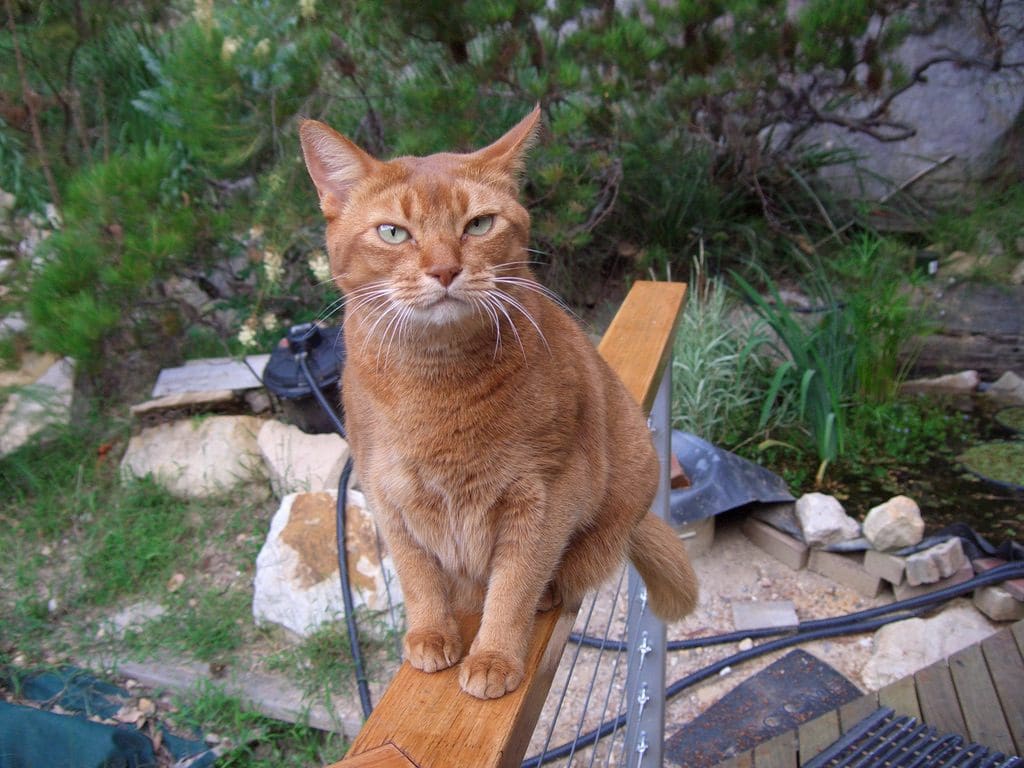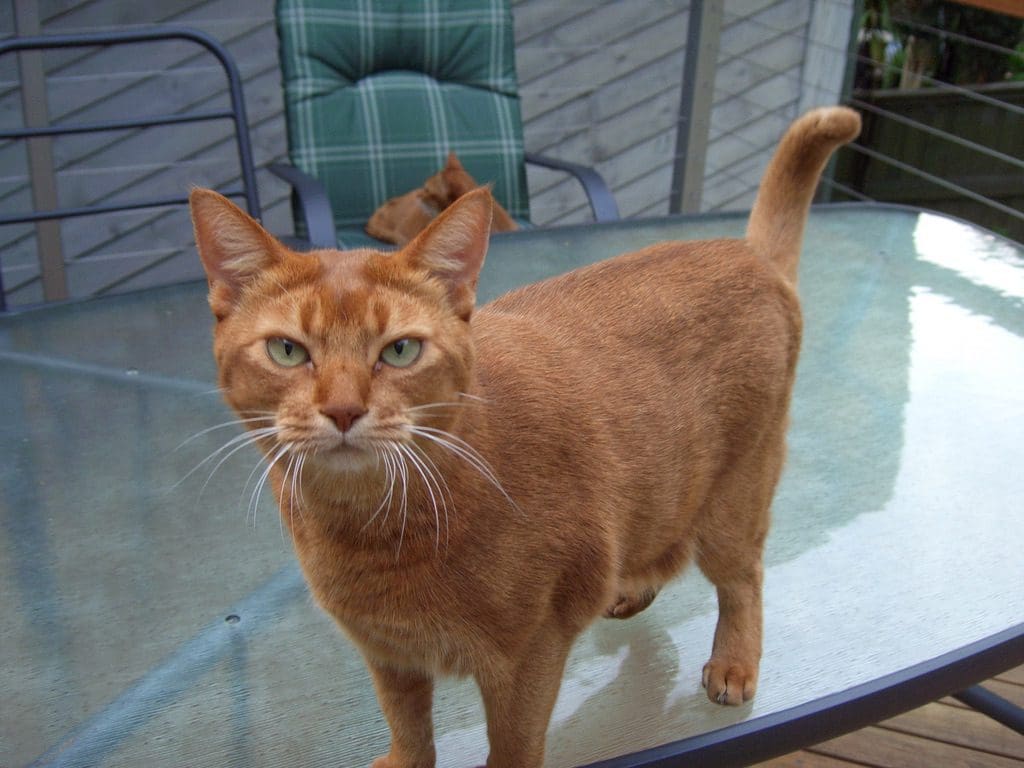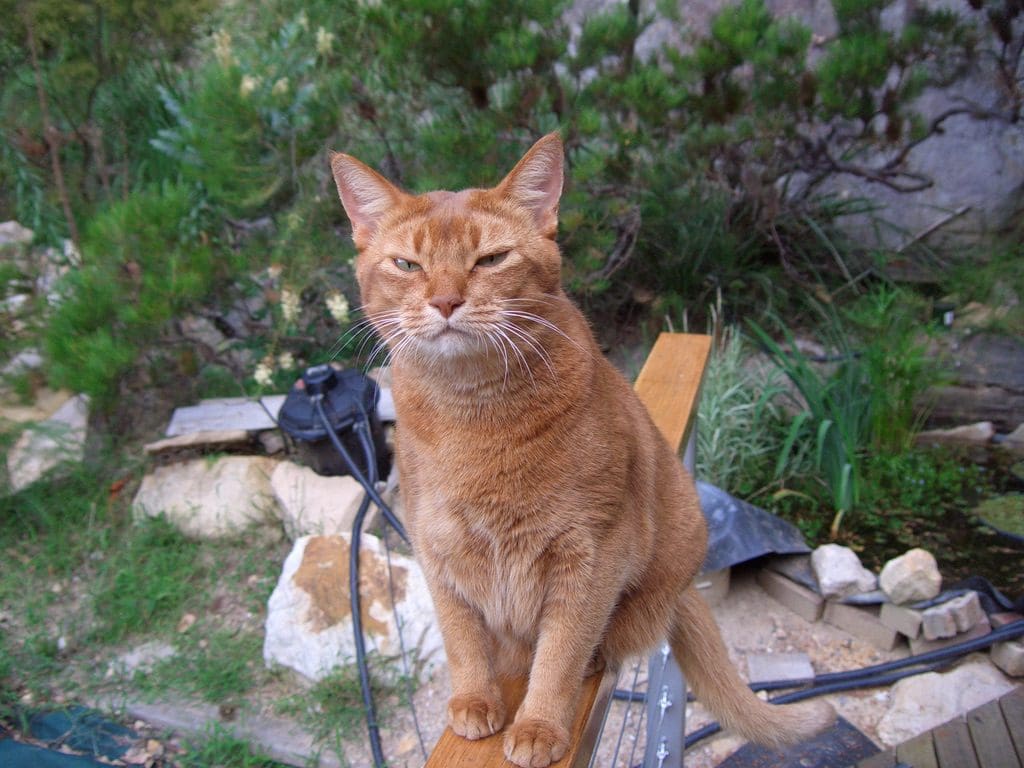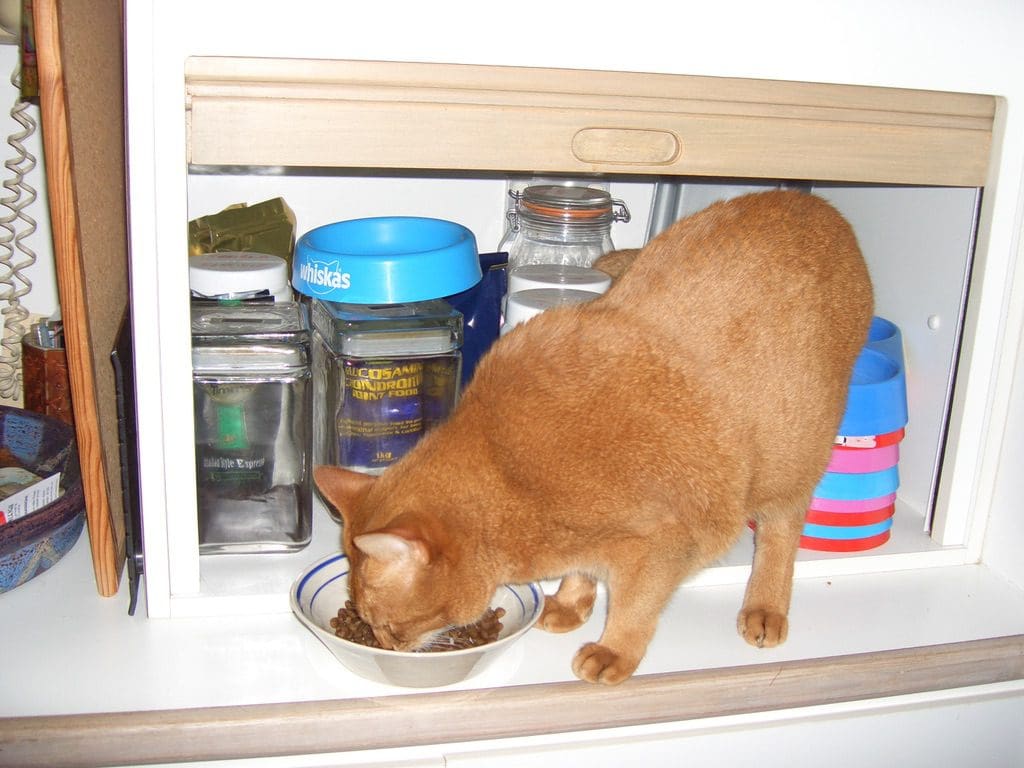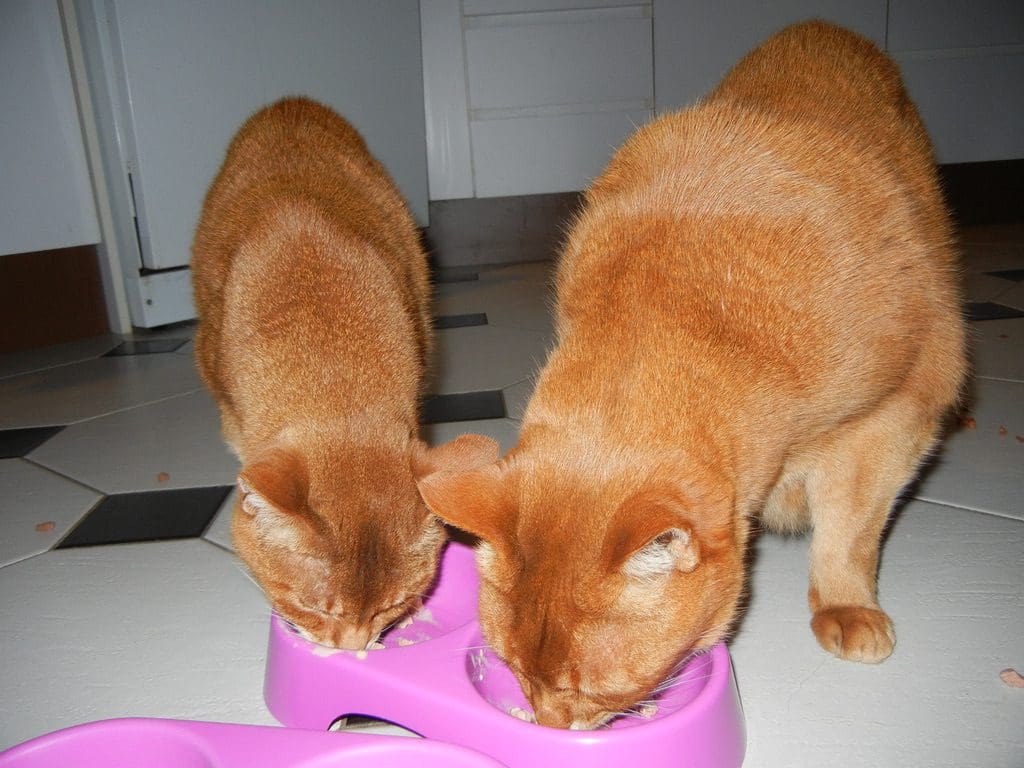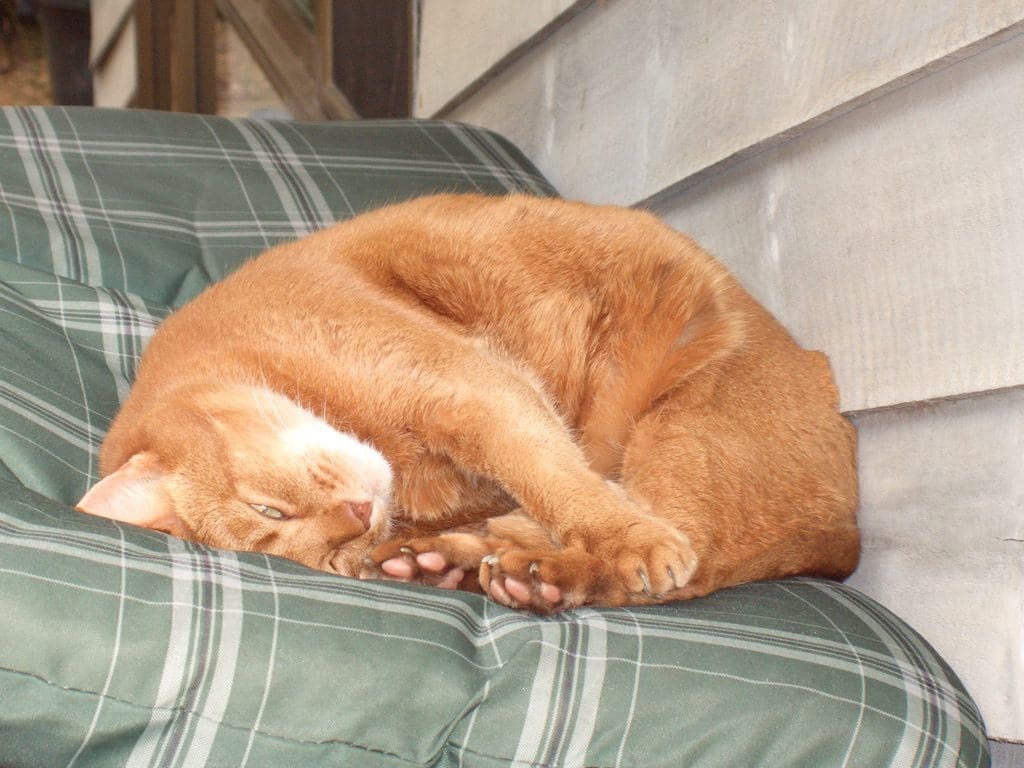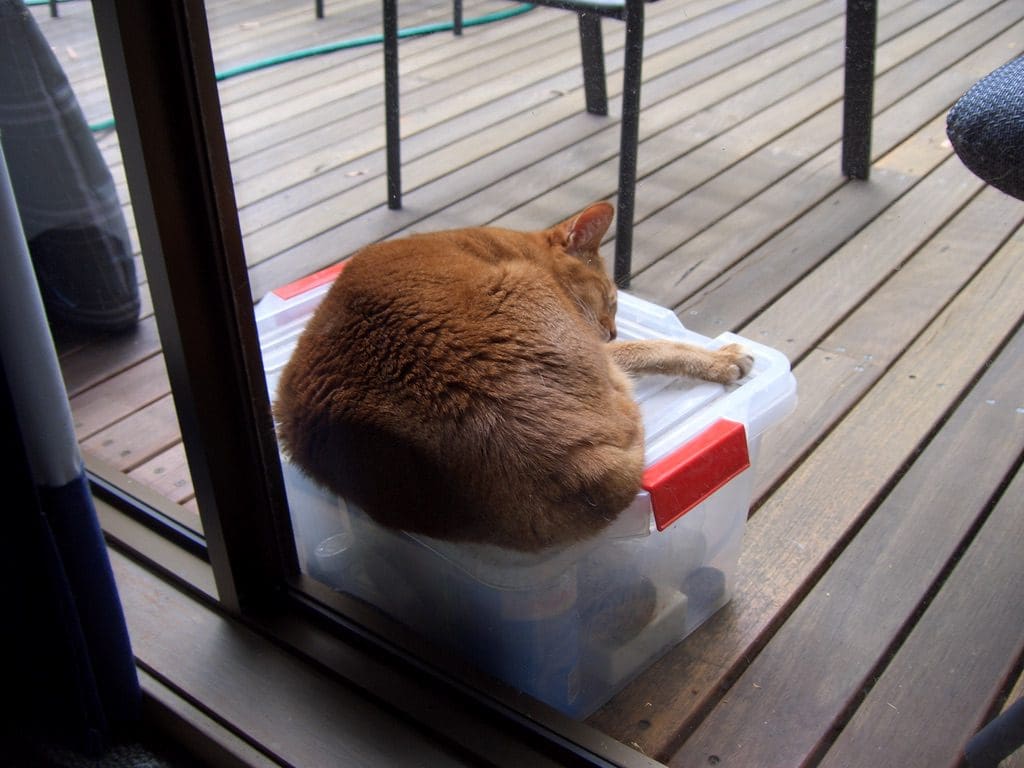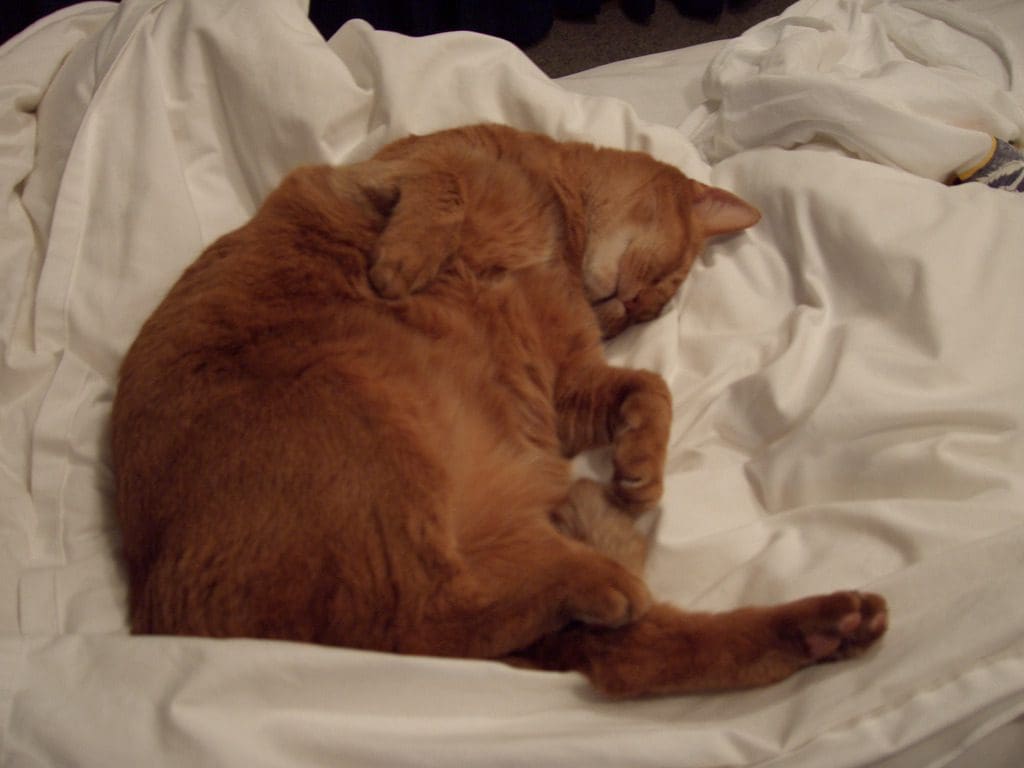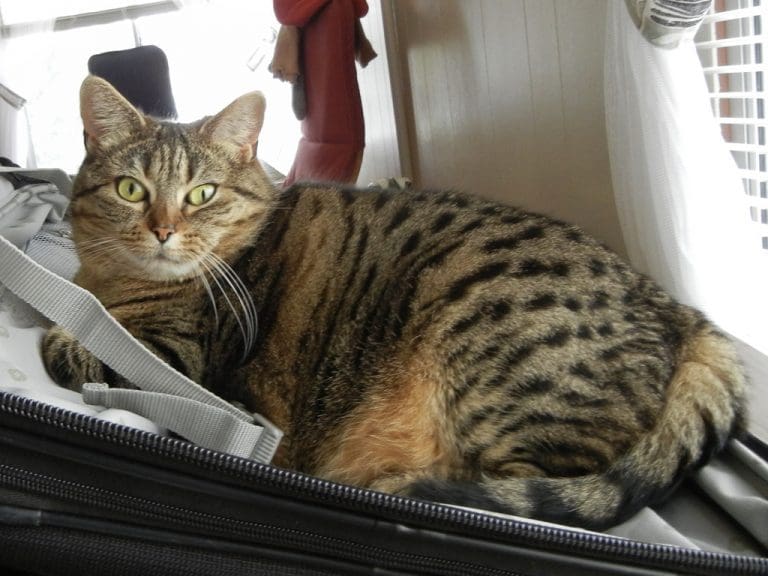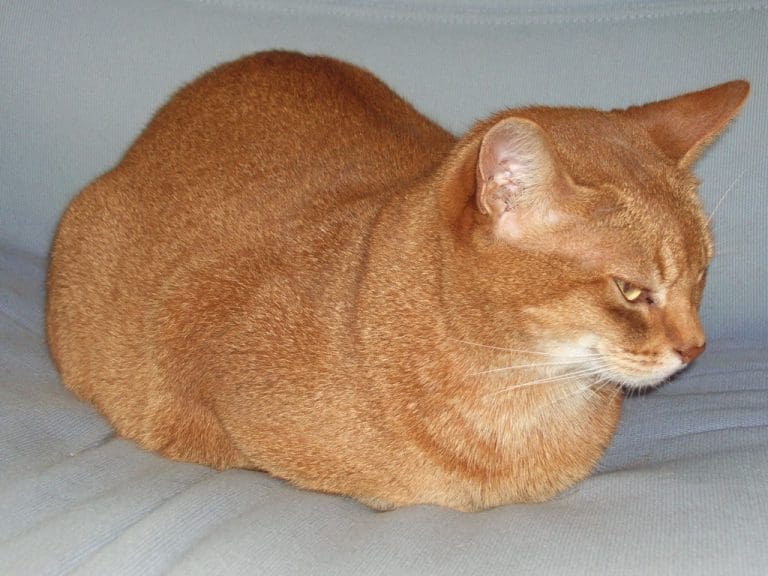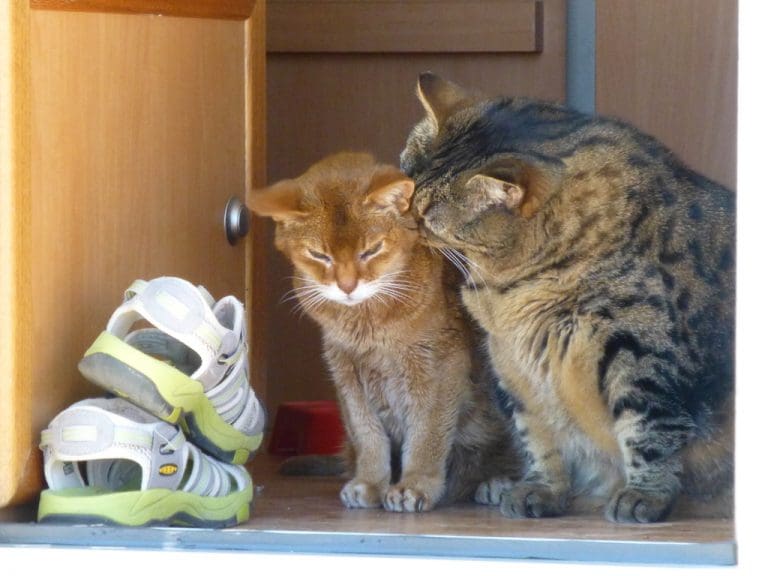Wookie Obituary
Wookie – 4 January 1997 – 5 July 2011
Pedigree Cinnamon Abyssinian/Somali (Westalaam Cattery – Pedigree name: Aces Skat)
‘Little friend of all the world’ (except birds, dogs, monsters).
Wookie was an excellent friend to us. He passed away on 5 July 2011 and I miss him. We called him ‘Wookie’ and ‘Buffa’ for his habit of giving head butts.
The friendliest cat. Every night almost without fail, he sat on my pillow to say goodnight to me with a head butt and cheek rub. Most mornings he woke me with a head butt and cheek rub, (Mind that was probably at 2am when he wanted company or a feed.) and played with my boot laces when I was putting on my boots. Always there giving a greeting with tail raised when he saw us or when he came into a room. He needed to be liked and loved.
Cautious, anxious, explorer, trickster are all words that apply. He explored everywhere but was always expecting something to leap out and attack him. A real lesson on how to do something with courage. A step forward with caution expecting to jump back. Extremely brave little fellow. However, he was not brave when T’ain jumped on the roof (which he did almost every day making a huge bang). Then, Wookie would hide under the bath until the monster left the roof. Wookie also hid under the bath and growled for two weeks when Neeka arrived.
Much to Helen’s annoyance, Wookie loved to make the bed. He loved to get under a sheet and attack hands being passed over him. He had a trick of seeming to walk on top of the sheet as it was tossed onto the bed. He buried himself in the doona.
It was always amusing to see Wookie wash himself. He rolled from side to side on his back. He had the best smell – like honey.
He loved his games. He was the first to do a major backflip and loved doing them.
Patience and tolerance. He never knowingly hurt us, even when he was distressed or pulled around by kids – never once bit or clawed.
Guard. He growled at all strangers and if anything happened in the yard at night. He would not let a dog come along the road at the front. He went out and beat them up. I saw him attack a friendly cocker spaniel that came up to me, and a staffie that he met at the letter box.
We picked Wookie up from Jenny West at the Westalaam Cattery in Canberra in Easter 1997 as a 12 week old. Right from the start he showed an anxiety to be liked. He climbed all over us as we drove back. He was especially fascinated by my glasses. Possibly except for that trip, he always hated cars and carried on almost to a point of hysteria on all other trips. (Both T’ain and Zazu actually liked the car, and liked little trips.)
Wookie was the teenage hoodlum in the house until T’ain’s death in 2008 when he suddenly became granddad. He got into every mischief. On the kitchen bench or table; poking into a cupboard; or around the yard, we could always tell where he was by the crowd of noisy minors above his head shouting ‘cat, cat, cat’. He was always checking over his yard. I saw him following the trail of a red-bellied black snake. One day, we saw him catch a young red-bellied black. When he was young, he often brought in dead birds. I am certain that he had found them already dead. In summer, he brought in many lizards – that he would drop into my hand when asked.
For many years, I took T’ain, Zazu and Wookie for a walk every morning. Wookie appeared to love these walks and continued them longest. He hated hissing trucks and one day ran between the wheels of a bin-truck. Scary for all. One day, he caught and gave me a small black cicada – ‘good to eat, human’.
He loved his sunny spots in the yard – a little hollow that caught the sun first or last.
Wookie is that cat who raised the alarm when the house over the creek was on fire. He disliked the fish in the pond and was always hooking them out with a claw. He did not know what to do with them then and just sucked them.
I wrote a series of short stories about him.
We miss you little friend with a big heart.
